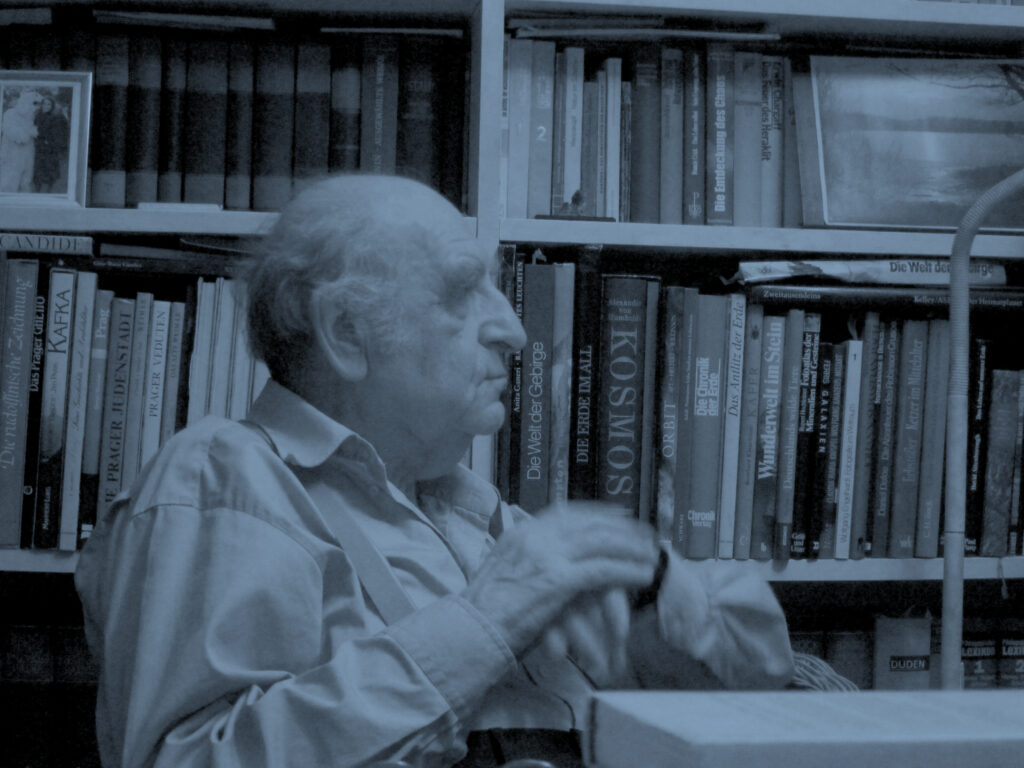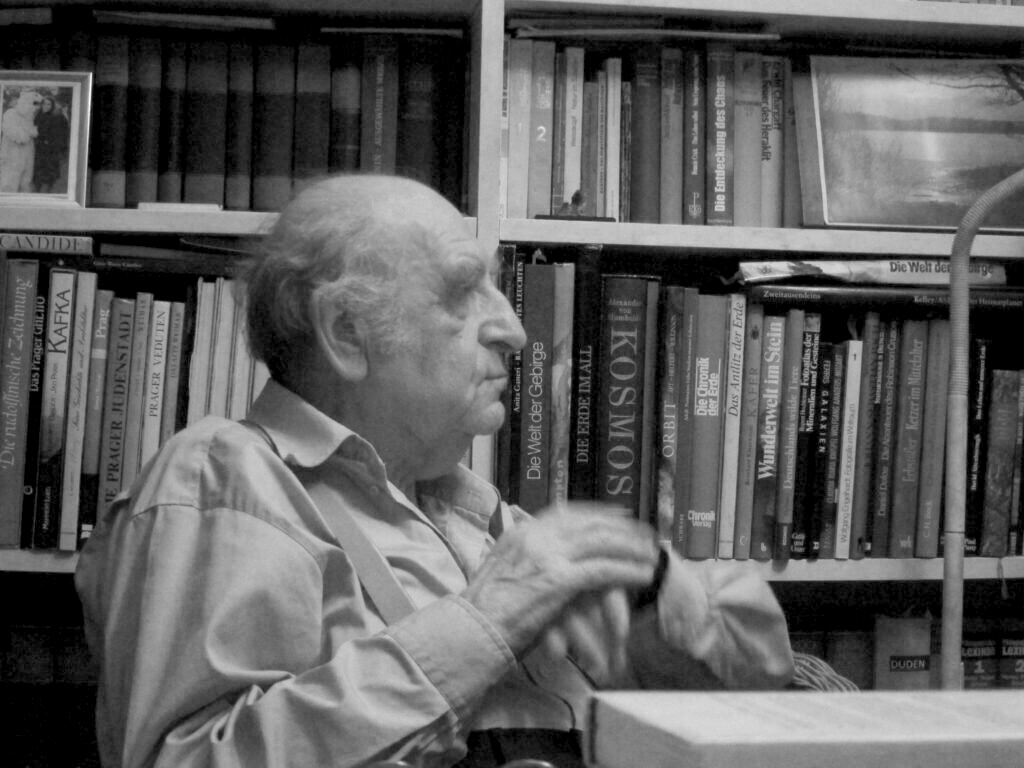The following is taken from the inaugural address for the opening of the exhibition, “Hommage à Baumeister”, at the State Academy of Fine Arts in Stuttgart on March 2, 1979. Fritz Seitz (1926–2017) attended Baumeister’s class from 1948 to 1953. From 1962 to 1992 he held a professorship for the Foundations of Visual Art at the Hamburg College of Fine Arts.
Those who came into close contact with the man quickly experienced the warm charisma of his robust-sympathetic temperament. One certainly perceived energy and inner activity, but their expression was generally softened by an easy-going quality, by a bear-like charm, and by the giggling humor twinkling through.
There was also the marked mildness, the weighed, in each case personal, attention during the discussion of student works, the delayed forming of verbal expression, the tactful judging. We would casually sit in a semicircle, Baumeister among us. He avoided any stiltedness or authoritarian manner. It certainly smoked where he sat, but that came from the inevitable cigar. We appreciated that. Those of us who had the infernal droning of the German barracks yard behind us also saw in this a guarantee for something entirely different, that which we had sought.
This good atmosphere was also well “ventilated”. Here I am referring to the rational form of communication that distinguished Baumeister’s teaching. During reviewing we learned to appreciate an awareness for methodology. Means and ways were considered and that which could be said was verbalized as clearly as possible. That quickly enabled us to explain our work ourselves and also gradually make our own judgments.
Much of what we picked up in the years after 1946 was certainly only superficially applied and came secondhand. This would be emptied out, since we had to grasp that the flourish and the decorative, the handed-down and supervening, could not be the original. Thus, the decorative was seen as the deadly enemy of expression.
“We don’t paint pictures — we study.” That sentence occasionally stood over the works that were assembled for the reviewings. It was immensely programmatic. And we also heard: “The artist must not want an effect — he must induce a state.” State — Path — Discovery: this succession of cause and effect drew Baumeister’s teaching close to the great tradition of Eastern civilizations. Also fitting in this context is this meaningful sentence: “The work must contain the great line of passivity.” One notices: the universal shone through this man’s activity, and also that which one calls the universally human.
I am nearing the conclusion. As already suggested, the occasion of the homage obliged us to not make former adversaries the target of sharp attacks. But I cannot pass over in total silence what was again thrown into Baumeister’s path after 1946. We need to realize that there was the ambition to translate Baumeister’s teaching into institutional practice, which ultimately would have restructured the entire Stuttgart academy. Powers stood opposed and in their way they knew how to prevent this. There were said to have been certain boycotting attempts in the years before 1950. And when he turned 65 the punctual farewell came again, although in certain cases there was always a lovely exception. Enough.
Ladies and gentlemen, let us consider that the majority of adversaries of old probably lie in their graves. Yes, today I would like, at least for this occasion, to ask for forbearance. Let yourself also be connected by a word of Baumeister’s from the well-known Darmstadt Debate. He confessed at the time:
I belong to those who are reluctant to find themselves in opposition to something — BUT for that reason I am opposed to and an enemy of those who busy themselves with pointing and judging!“
We would therefore oppose Baumeister’s spirit if, especially today to honor his 90th birthday, we wanted to point at and judge others.
A final word to the youth with whom Baumeister most preferred to be together, whom he loved and who returned his love: we, the former students of this man, wish you the good fortune to meet a true authority and the ability and inner freedom to perceive and use such an authority — opened in the spirit of development that we do not know, that still remains before us as the unknown, but that we want to achieve with our entire being!
(Excerpts from the address, quoted from Kermer 1992, p. 189 ff.)
Funeral speech at the Prague Cemetery in Stuttgart on September 5, 1955.
Dear Baumeister family
Dear MournersMany students — here and far and wide — would like to say a word of gratitude to their Willi Baumeister amidst tributes and expressions of friendship:
to the important painter who attracted us
the unique teacher who convinced us
the wonderful person who held us close.
Many of us found solace and fulfillment in Willi Baumeister’s teachings and guidance, compensating for the disillusionment we had previously experienced.
And just as he was entirely on the side of youth, he allowed us to participate directly in a comprehensive oeuvre, within which his actual artwork seemed like a personal interpretation.
Because we were there and allowed to participate, Willi Baumeister created a new, large-scale doctrine of pictorial design for us, a comprehensive and innovative approach to visual art that reshaped our understanding of painting and design.
This occurred in a whimsical, unforgettable atmosphere of complete togetherness, where we, his students, felt a profound sense of unity and shared purpose and where his authority was preserved as natural and entirely self-evident.
He was far ahead of us on the path to ever-new discoveries. Thus, he was the youngest of us all. While the outside world’s incomprehension stifled us, he remained untouched by spiritual superiority.
Now, as we stand outwardly separated, the legacy of his work remains alive in us — gratitude.
The image of our unforgettable
W.B.
(typescript in the Baumeister archive)

